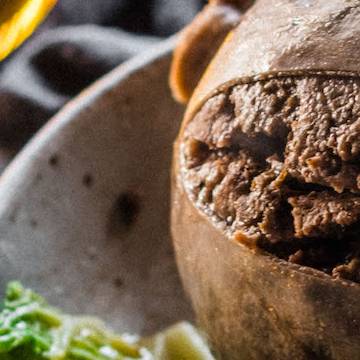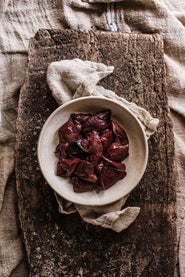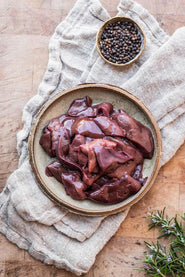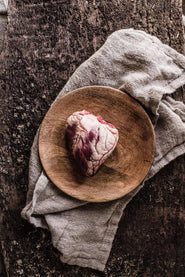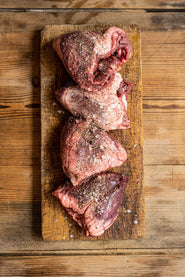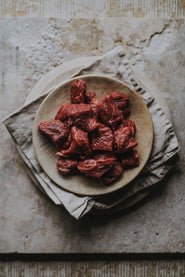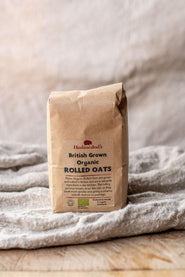Haggis is not only really delicious, but it's also really good for you as it's packed full of vitamins and nutrients.
One of the main ingredients of haggis is liver, which is high in vitamin A, vitamin B12 and folate. Heart and lungs will provide some iron, zinc and selenium and the oats included in haggis will contribute to fibre intake, making it a hearty and nutritious meal.
If you're intrigued by Haggis, our delicious, all natural recipe is a million miles from the mass-produced novelty versions you'll find on the supermarket shelves.
The History of the Haggis
In 1801, on the fifth anniversary of the death of Robert Burns, his friends got together to celebrate his life. Burns immortalised haggis in his most famous poem, so it was the obvious food to serve. This celebration has continued every year on Burns’ birthday, 25 January, ever since. Events are held across the world, where people recite his poetry, sing, drink the finest whisky and – of course – eat haggis.
When it comes to Haggis the biggest myth of all, in a way, is that haggis belongs to Scotland alone. Haggis is actually a very ancient, global dish. Dating back thousands of years, when hunters returned with their kill they would cook-up the parts of the animal that needed to be eaten first. The fresh offal would be chopped and mixed with cereal and herbs and cooked over the fire in the ready-made saucepan (the stomach).
In the absence of hard facts as to haggis' origins, popular folklore has provided some notions. One is that the dish originates from the days of the old Scottish cattle drovers. When the men left the Highlands to drive their cattle to market in Edinburgh, the women would prepare rations for them to eat during the long journey down through the glens. They used the ingredients that were most readily available in their homes and conveniently packaged them in a sheep's stomach allowing for easy transportation during the journey.
Address to a Haggis
(by Robert Burns)
Good luck to you and your honest, plump face, Great chieftain of the sausage race! Above them all you take your place, Stomach, tripe, or intestines: Well are you worthy of a grace. As long as my arm.
The groaning trencher there you fill, Your buttocks like a distant hill, Your pin would help to mend a mill. In time of need, While through your pores the dews distill, Like amber bead.
His knife see rustic Labour wipe, And cut you up with ready slight, Trenching your gushing entrails bright, Like any ditch; And then, O what a glorious sight, Warm steaming, rich!
Then spoon for spoon, the stretch and strive: Devil take the hindmost, on they drive, Till all their well swollen bellies by-and-by, Are bent like drums; Then old head of the table, most like to burst, 'The grace!' hums.
Is there that over his French ragout, Or olio that would sicken a sow, Or fricassee would make her vomit. With perfect disgust, Looks down with sneering, scornful view, On such a dinner?
Poor devil! see him over his trash, As feeble as a withered rush, His thin legs a good whip-lash, His fist a nut; Through bloody flood or field to dash, O how unfit.
But mark the Rustic, haggis-fed, The trembling earth resounds his tread, Clap in his ample fist a blade, He'll make it whistle; And legs, and arms, and heads will cut off, Like the heads of thistles.
You powers, who make mankind your care, And dish them out their bill of fare, Old Scotland wants no watery stuff, That splashes in small wooden dishes; But if you wish her grateful prayer, Give her [Scotland] a Haggis!
